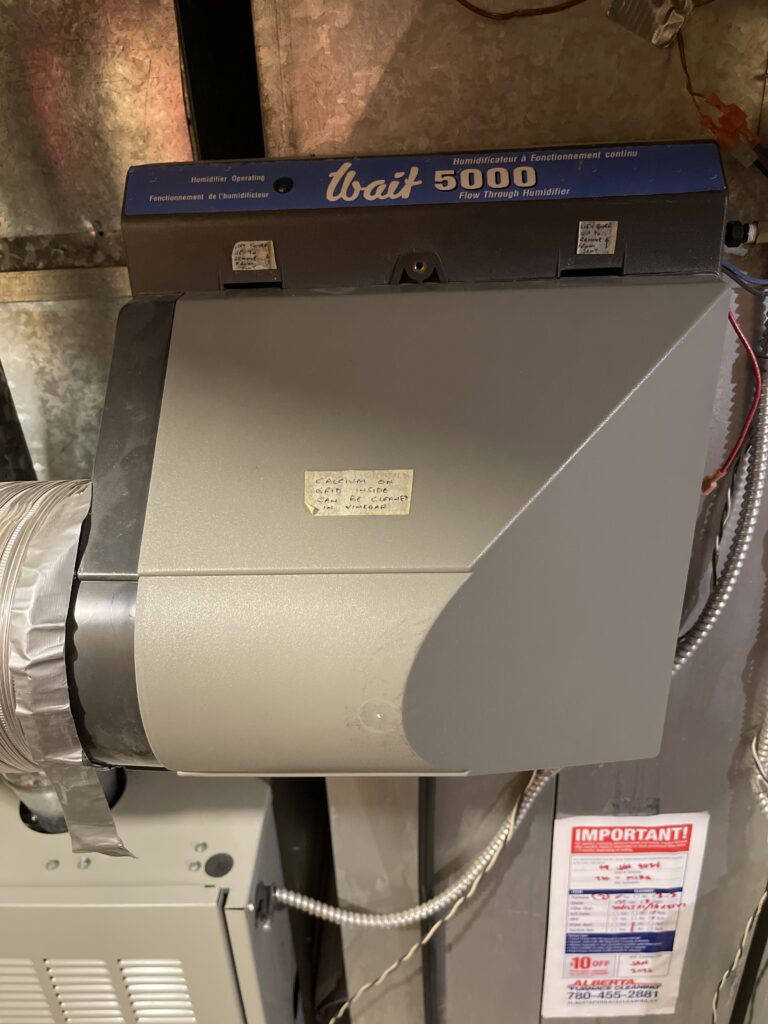4 Things You Should Know About Furnace Humidifiers
- What does a humidifier do?
- A furnace mounted humidifier adds moisture to the air that your furnace distributes through your supply (sometimes called “hot air”) ductwork.
- Water comes into the unit through a tube and depending on the type of unit, air is flowed through a pad, a sponge, or discs, before being sent through your supply ducts.
- This increases the moisture content of the air, which can improve comfort especially in dry Alberta winters.

- What are the types of humidifiers?
- Flow through – this is the most common type. Water moistens an evaporator pad. Air is flowed through the humidifier to absorb moisture from the pad and then is blown through the return or “hot air” system to provide moisturized air to the house.
- Drum Humidifier – there are several types of drum humidifiers – older style with a sponge that rotates and becomes moist, with air passing through it to pick up the moisture. Newer styles have multiple disc and no pads or sponges.
- Why should I pay attention to my humidifier?
- A functioning humidifier with a clean pad is critical to maintaining good moisture in your home
- To prevent potential damage to your furnace, you should regularly check your humidifier
- Humidifier leaks (and damage to your furnace) can be caused by water feed tubes that become clogged, brittle or loose
- Failing to replace your humidifier pad, and failing to inspect and clean your unit as needed can also result in leakage which could damage the electrical components of your furnace

- What should my humidifier be set at?
- The Health Canada Healthy Home Guide recommends keeping humidity levels between 30-50%
- Low humidity may aggravate skin allergies and contribute to or exacerbate respiratory infections.
- High humidity can lead to mould.


